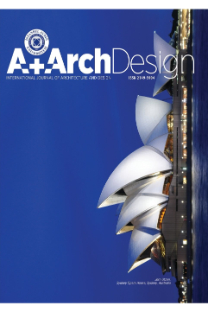Sürdürülebilirlik – Sürdürülebilir Gelişme ve Yaşam Kalitesi
Kent ve çevresi yeryüzündeki insanların büyük oranının yaşam alanıdır. Sürdürülebilir gelişmenin
hedeflerinden biri olan yaşam kalitesi, güvenli ve rahat bir kent çevresi ile ekonomik ve sosyal refahı
sağlamayı hedefleyen bir kavramdır. Günümüzde uluslararası seviyede yapılan çalışmalar, hükümetlerin
yaşam kalitesine yönelik kentsel politikalar geliştirmelerine ve kentsel ölçekte uygulamalara yol
açmaktadır. Ancak kentsel kalitenin göreceli olarak sıralanması ve çözümlenmesinde yöntem çalışmalarına
gereksinim duyulmaktadır. Kentsel yaşam kalitesinin tanımlanması, değerlendirilmesi ve geliştirilmesinde
izlenen yollar bu makalenin konusudur.
Anahtar Kelimeler:
Sürdürülebilirlik, yaşam kalitesi, kentsel gelişim
Sustainability-Sustainable Development and Life Quality
The city and its environment are important because it is the place where the greatest proportion
of people live on earth. The quality of life, which is one of the goals of sustainable development, is a concept
that aims to provide economic and social welfare in a secure and comfortable urban environment. The
studies being carried out today at international level pressure governments to develop urban policies and
to carry out at urban level. However, method studies are required in order to classify and analyze the urban
quality relatively. The methods to be used for description, interpretation and development of the quality of
urban life stand as subjects of this article.
Keywords:
Sustainability, quality of life, urban development,
___
- [1] Karaman, A. (1995). Sürdürülebilir çevre kavramı çerçevesinde ekolojik planlama yaklaşımı: Bir yöntem. Planlamaya Ve Tasarıma Ekolojik Yaklaşım Sempozyum Kitabı, Msü Mimarlık Fakültesi Şehir Ve Bölge Planlama Bölümü, 254-286.
- [2] PLANNING, S. D. (1996). The Local Agenda 21 Planning Guide. [3] Keleş, R., & Hamamcı, C. (2004). Çevrebilim, İmge Kitabevi, Ankara, 4.
- [4] Burrough, P. A. (1992). Development of intelligent geographical information systems. International journal of geographical information systems, 6(1), 1-11.
- [5] Habitat, U. N. (2004). Urban indicator guidelines. Monitoring the Habitat Agenda and the Millennium Development Goals. United Nations Human Settlement Programme.
- [6] World Bank (2000). “Cities in Transition: World Bank Urban and Local Government Strategy”, Washington, DC: World Bank.,www.worldbank.org/.../$FILE/Cities, last accessed on 29 November 2020
- [7] Yener, A. (1996). http://acikarsiv.ankara.edu.tr/fulltext/492.pdf, last accessed on 29 November 2020 [8] Johansson, S. (2001). Conceptualizing and Measuring Quality of Life for National Policy, Social Indicators Research.
- [9] Stead, D., & Hoppenbrouwer, E. (2004). Promoting an urban renaissance in England and the Netherlands. Cities, 21(2), 119-136. [10]Bertrand, Robert J. (1986/87). ‘Les indicateurs sociaux’, The Tocqueville Review, 8:211-233.
- [11] Rapoport, A. (1990). The meaning of the built environment: A nonverbal communication approach. University of Arizona Press.
- [12] Oh, K., & Jeong, Y. (2002). The usefulness of the GIS—fuzzy set approach in evaluating the urban residential environment. Environment and planning B: planning and design, 29(4), 589-606.
- [13] Quality of Life (2003). “The Northwest Indiana Quality of Life Council (NIQOLC) Creating a Sustainable FutureforNorthwest Indiana, http://www.iun.edu/~cre/npi/qualityoflife.pdf.
- [14] IISD (1997). International InstituteforSustainable Development City of Winnipeg Quality of Life Indicators Canada Board Room, http://www.iisd.org/pdf/wpg.qoli.pdf, last accessed on 29 November 2020
- ISSN: 2149-5904
- Başlangıç: 2015
- Yayıncı: İstanbul Aydın Üniversitesi
